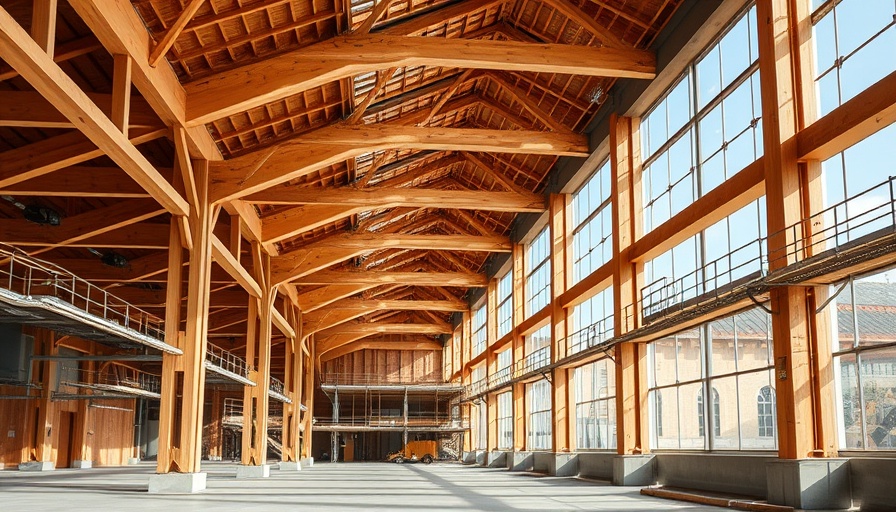
Walmart's Innovative Leap into Sustainable Building
Walmart is setting a new benchmark in the corporate world with its plans for the largest mass timber corporate campus in the United States. This remarkable initiative is centered in Bentonville, Arkansas, and is set to redefine sustainability in commercial construction.
The Role of Mass Timber in Construction
Mass timber, particularly cross-laminated timber (CLT) and glue-laminated timber (Glulam), are the backbone of this campus's infrastructure. Manufactured by Mercer Mass Timber (MMT), these sustainable materials play a crucial role in reducing the carbon footprint of the construction process. For businesses and property developers, adopting mass timber not only aligns with modern architectural trends but also signifies a commitment to environmental responsibility.
Design Features and Planning
The Bentonville campus will feature four hybrid mass timber buildings, each four stories tall, totaling over 897,500 square feet. Another five-story building will utilize a full mass timber frame, contributing an additional 332,615 square feet to the office space. The decision to use mass timber is not just about aesthetics but also offers significant health benefits, resulting in improved employee wellbeing.
What's Next for the Campus?
The installation of mass timber panels commenced in Spring 2024 and has now reached completion. This marks a significant milestone in the ambitious timeline, with the campus set to open its doors in late 2025 to early 2026. As the construction industry looks towards more sustainable practices, Walmart's flagship campus is expected to inspire other companies to follow suit.
The Future of Sustainable Corporate Environments
Walmart’s investment in mass timber reflects a growing trend among corporations to prioritize sustainability. Property developers and facility managers looking to capitalize on these trends can see the clear advantages of incorporating environmentally friendly materials into their projects. By putting sustainability at the forefront, businesses enhance their brand reputation, attract eco-conscious customers, and comply with increasing regulatory demands related to environmental practices.
By understanding the implications of Walmart's new campus, community developers and business owners can begin rethinking their approach to construction. This landmark project showcases the benefits of investing in sustainable infrastructures, and serves as a model for health-conscious and socially responsible business strategies moving forward.
 Add Row
Add Row  Add
Add 




Write A Comment